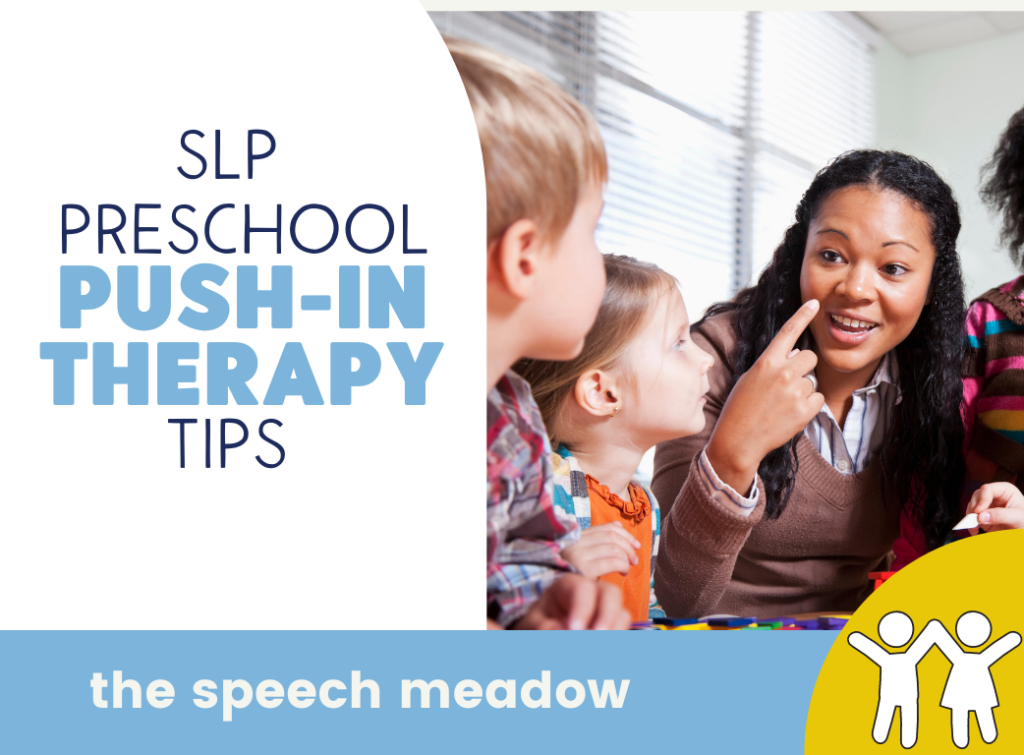Working as a push-in SLP therapist in a preschool classroom can, at times, seem very overwhelming but also very rewarding. Here are four SLP preschool push-in therapy tips to help you and your students have a successful year.

Relationships versus Compliance
Children, especially at this age, will have difficulty listening to or doing what you say when they don’t trust or know you. Take some time to get to know your students and them you. It does not mean that the children can do whatever they want. You still need to set some boundaries but know that it might take some time as you build a relationship. It will help you in the long run when you really need to target their therapy goals.
Attention spans
Remember, preschoolers have very short attention spans. The general rule of thumb is a child’s attention span is roughly 2-4x chronological age. Also, children with language delays typically have shorter than normal attention spans.
Keep your activities short; you may only have 6-8 minutes of focused time. Less if they don’t understand the activity, don’t like it, or are overwhelmed by it.
Sitting
Children at this age typically don’t like to sit in chairs. Children are meant to be moving. Don’t expect them to sit still for long periods. Build movement into your therapy. Look to see if the children have been sitting for long periods. They may need to move between activities if you’re also doing a sitting activity. It may also mean moving around the classroom and doing therapy in different spaces.
Play
Play is essential for young developing brains and bodies. You can, and probably should, spend some therapy time playing with your students. You can target most goals during play.
You can mix free play (the child is entirely in charge) and adult-directed play (the adult may choose the toys or start the play script). If the children are new to you, spend way more time free playing. You will learn how the children play and what they like and don’t like.
In general, follow their lead (even in adult-directed play) and use language facilitation strategies. If you are looking for more info on play? Check out this blog post on play.
The Classroom Team
Being a part of a team can be amazing; it can also have bumpy patches. Take some time to learn about your team members’ likes and dislikes. For example, I worked with a team member who hated water beads. We had to have discussions about using water beads in the classroom when I proposed to use them. We ended up compromising. Water beads were not used when I was not supervising that station in the classroom. For additional SLP preschool push-in therapy tips for working on a team, check out this blog post.
Have Fun!Working with this age group can be very challenging. It should also be fun. For ideas on using school and apple themes in preschool therapy, click here for the link for free handouts. Let me know what are your SLP preschool push-in therapy tips.
